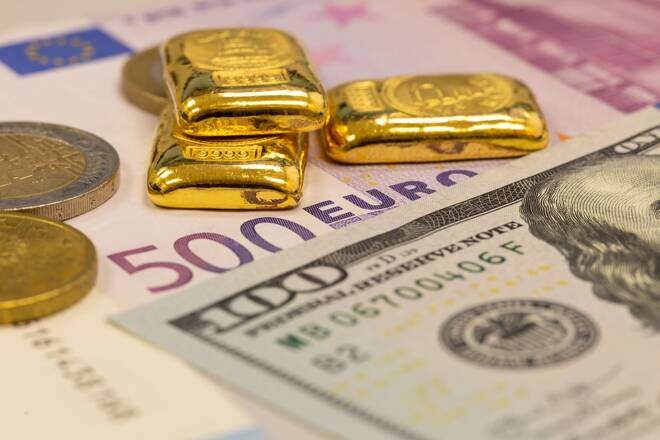Advertisement
Advertisement
Price of Gold Fundamental Daily Forecast – Weaker Amid Aggressive Central Bank Tightening Expectations
By:
The major central banks are going to have to front-load the rate hikes, which means gold is going to have a hard time attracting new buyers.
Gold futures are drifting lower on Thursday as the hawkish tone from several high-ranking Federal Reserve officials made the U.S. Dollar a more attractive asset, leading to lower demand for the dollar-denominated asset. Worries about a possible global recession are also increasing the dollar’s appeal as a safe-haven asset.
At 11:02 GMT, August Comex gold is trading $1809.90, down $7.60 or -0.42%. On Wednesday, the SPDR Gold Shares ETF (GLD) settled at $169.51, down $0.11 or -0.07%.
Gold Falls as Fed Reiterates No Pain, No Gain Pledge
Gold is under pressure for a fourth straight session as the aggressive stance by central banks to fight inflation, especially the Federal Reserve, is making bullion a less-desirable investment. Not only do the central banks have to raise interest rates, but they have to do it fast to prevent red-hot inflation from becoming entrenched.
This means the central banks are going to have to front-load the rate hikes, which means gold is going to have a hard time attracting new buyers.
Based on statements from Fed Chair Jerome Powell on Wednesday, this rate hike strategy may even inflict pain on consumers by causing a recession. But the agony of a recession will be nothing compared to the pain inflicted by long-term inflation.
“We’re strongly committed to using our tools to get inflation to come down. The way to do that is to slow down growth, ideally keeping it positive,” he said. “Is there a risk that would go too far? Certainly, there’s a risk. I wouldn’t agree that it’s the biggest risk to the economy. The bigger mistake to make…would be to fail to restore price stability.”
Daily Forecast
Today, the focus shifts back to economic data although the results are not likely to change the mind of Fed officials about using monetary policy aggressively to tackle the inflation problem.
At 12:30 GMT, traders will get the chance to respond to a fresh batch of economic reports including Weekly Initial Claims, Personal Income, and Consumer Spending for May.
The core personal consumption expenditures price index – the Fed’s preferred inflation gauge – will be released at the same time, while the Chicago Purchasing Manager’s Index for June is scheduled to be published at 13:45 GMT.
The core personal consumption expenditures price index is expected to cause a 0.4% monthly gain. Coming in lower will be an early indication that inflation may be peaking. This could trigger an intraday short-covering rally in gold because it could mean the Fed won’t have to be as aggressive for a long period of time.
For a look at all of today’s economic events, check out our economic calendar.
About the Author
James Hyerczykauthor
James Hyerczyk is a U.S. based seasoned technical analyst and educator with over 40 years of experience in market analysis and trading, specializing in chart patterns and price movement. He is the author of two books on technical analysis and has a background in both futures and stock markets.
Did you find this article useful?
Latest news and analysis
Advertisement
